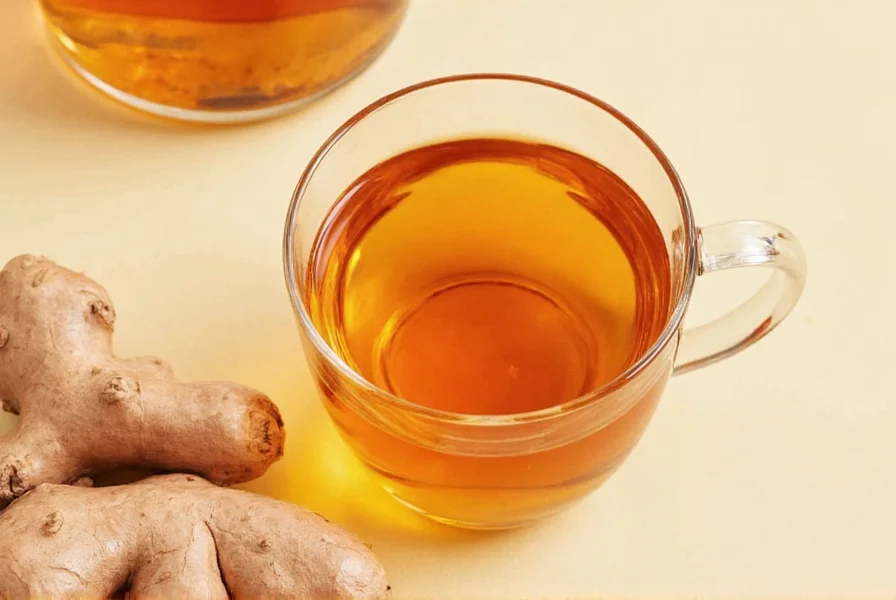Millions of people worldwide turn to ginger root tea as a natural remedy when nausea strikes. Unlike pharmaceutical options that often come with side effects, this centuries-old remedy offers a gentle yet effective solution backed by modern science. Understanding exactly how and why ginger works for nausea can help you use it more effectively when discomfort strikes.
The Science Behind Ginger's Anti-Nausea Properties
Ginger's effectiveness against nausea isn't just folklore—it's supported by substantial clinical evidence. The root contains powerful bioactive compounds, primarily gingerols and shogaols, which interact with your digestive system in several beneficial ways:
- Reduces inflammation in the gastrointestinal tract
- Accelerates gastric emptying, preventing that queasy, full feeling
- Blocks serotonin receptors involved in triggering nausea
- Calms intestinal contractions that cause discomfort
A comprehensive 2020 review published in Nutrients analyzed 12 clinical trials involving over 1,200 participants. The researchers concluded that ginger supplementation significantly reduced nausea severity across various conditions compared to placebo. The effects were particularly pronounced for pregnancy-related nausea and chemotherapy-induced symptoms.

How to Prepare Ginger Root Tea for Maximum Nausea Relief
Not all ginger tea preparations deliver equal results. To maximize the anti-nausea compounds, follow these evidence-based preparation methods:
| Preparation Method | Ginger Amount | Steeping Time | Best For |
|---|---|---|---|
| Fresh root tea | 1-2 inches sliced | 10-15 minutes | Immediate relief |
| Cold-brew method | 2 inches grated | 4+ hours | Sensitive stomachs |
| Double-strength | 3 inches sliced | 15-20 minutes | Severe nausea |
For immediate nausea relief, fresh ginger root tea provides the highest concentration of active compounds. Simply peel and slice 1-2 inches of fresh ginger root, add to boiling water, and steep for 10-15 minutes. The hotter the water and longer the steeping time, the more gingerols convert to the more potent shogaols.
Effectiveness for Different Types of Nausea
Ginger root tea's effectiveness varies depending on the nausea cause. Research shows particularly strong results for:
Pregnancy-Related Nausea
A 2022 study in Obstetrics & Gynecology found that pregnant women consuming 1 gram of ginger daily experienced 35% less nausea severity than the control group. The American College of Obstetricians and Gynecologists recognizes ginger as a safe first-line treatment for morning sickness.
Motion Sickness
Research published in Travel Medicine and Infectious Disease demonstrated that participants who consumed ginger before travel experienced significantly less motion sickness than those taking placebo. For best results when traveling, drink ginger tea 30 minutes before departure and sip periodically during your journey.
Post-Operative Nausea
Hospitals increasingly offer ginger as a complementary treatment. A meta-analysis in Anesthesia & Analgesia showed ginger reduced post-operative nausea incidence by 38% compared to standard care alone.

Safety Considerations and Potential Interactions
While generally safe, ginger root tea isn't appropriate for everyone. Understanding these safety considerations helps prevent adverse effects:
- Pregnancy: Safe in moderate amounts (up to 1 gram daily), but consult your healthcare provider first
- Blood thinners: Ginger may enhance effects of medications like warfarin
- Gallstones: May increase bile production, potentially causing discomfort
- Surgery: Discontinue at least 2 weeks before scheduled procedures
The recommended daily limit for nausea relief is 4 grams of ginger (approximately 2-3 cups of strong tea). Exceeding this may cause heartburn, diarrhea, or mouth irritation in sensitive individuals. If nausea persists beyond 48 hours or includes vomiting, consult a healthcare professional to rule out serious conditions.
Enhancing Ginger Tea's Effectiveness
You can boost ginger root tea's anti-nausea properties with these evidence-based additions:
- Lemon juice: The citric acid helps extract more active compounds from ginger
- Honey: Soothes the throat and may enhance ginger's absorption
- Mint leaves: Provides additional digestive calming effects
- Warming spices: Cinnamon or cardamom may enhance ginger's therapeutic effects
For severe nausea, try a double-strength preparation: simmer 3 inches of sliced ginger in 2 cups water for 15-20 minutes, then add the juice of half a lemon. Sip slowly while warm for maximum benefit.
When Ginger Tea Isn't Enough
Ginger root tea works remarkably well for mild to moderate nausea, but certain situations require medical attention:
- Nausea lasting more than 48 hours without improvement
- Vomiting blood or material resembling coffee grounds
- Severe abdominal pain accompanying nausea
- Inability to keep any fluids down for 12+ hours
- Nausea with fever, headache, or stiff neck
While natural remedies like ginger tea for nausea relief offer valuable options, they complement rather than replace professional medical care when needed. Always consult your healthcare provider about persistent or severe symptoms.











 浙公网安备
33010002000092号
浙公网安备
33010002000092号 浙B2-20120091-4
浙B2-20120091-4